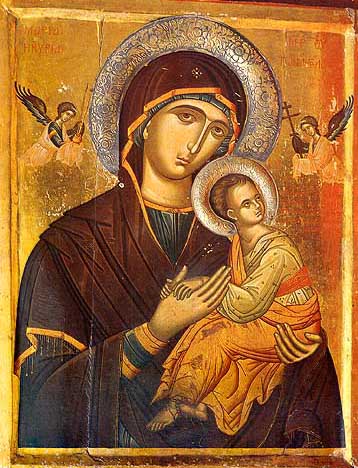- Grab your Bibles, walk Stations (but no flagellations which cause some to fear)! It's the most wonderful time of the year!
- There'll be fasting and penance and Cap'n D's restaurants into which we'll steer! It's the most wonderful time of the Year!
- "En Ego O Bone et Dulcissime Iesu" (in English) you'll hear! It's the Most wonderful time of the year!
Some will just think that I have an odd sense of humor. Others might think that I'm missing the point of the season, when much of the focus is upon repentance for our own sinfulness. I can never help feeling a certain joy as this season arrives, though. For one thing, there aren't all the annoying songs you hear at Christmas (though as you can tell, I'm not helping in that department). The height of commercialism seems to be extra advertising by Red Lobster and Long John Silver's. There's some merit to this, I suppose.
But the real cause for joy is that this is our time for pruning, Spring cleaning, and renewing our relationship with God (and also our neighbor). It's a time for extra discipline in this regard. For all that I blog about our tradition of prayer, I've never seen myself as particularly good at prayer (the blogging has in fact done some good in my own prayer life). The essence of Lent is not just on turning away from our sins, but replacing these particularly bad habits with good habits. As the word "Lent" means "Spring", I have always assumed this is what makes Lent our "Springtime".
So, suffice to say that I'm happy to get rid of some of the crap and work on a relationship that's pretty important. This means prayer, prayer, prayer. But in doing so, I've decided to focus especially on Lectio Divina. I have always been quite drawn to Sacred Scripture and the Early Church Fathers (since I was about 15, really). Nevertheless, so much of my pursuit of these topics was from a purely academic, historical approach. The spiritual or devotional or relational aspect has always been neglected in my life (the one outlet for this was perhaps during Mass and the Hours).
I find that this form of prayer ought to be an aid toward a greater dialogue with God, as it is perhaps the purest form of meditation in our tradition. I am certainly not a natural contemplative, and have always had great difficultly maintaining focus during the Rosary or Adoration. I hope that this use of the text will be an aid to this discipline of prayer.
Especially in light of the Apostolic Exhortation on the Word of God, Verbum Domini, I thought that it would be very appropriate to engage more fully in this form of prayer. I plan to engage in other activities, to be sure, but this will be the primary activity for the time. I wish you well as you embark on your own journeys. Godspeed to all as we prepare for the full joy of Easter.







